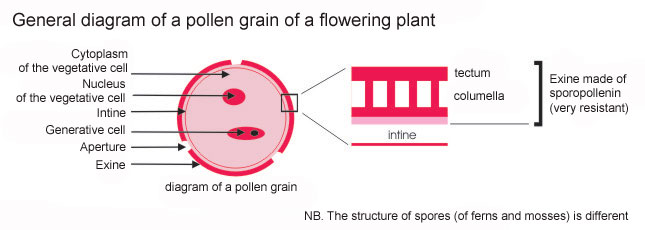1. The diameter or the maximum length of a grain usually ranges between 10 and 200 µm
The observation of the characteristics of a pollen or a spore grain requires the use of a light microscope with 100 to 400 x magnification.
2. If several grains of the same species are observed, it can be seen that all the grains of the same species have the same shape and the same structure, but they can appear in different ways under the microscope, according to their position.
A spore or a pollen grain is a volume; when observed in the microscope, it shows only a plane, i.e., a face of this volume. As this volume can be positioned with different angles, it can appear in different ways.
3. If the grains of two different species, belonging to different families, are compared, it can be seen that the pollen of each species has special characteristics that enables to distinguish it from that of other species.
This is a very important special feature of pollens and spores, on which palynology relies. The main characteristics of the grains are :
- the number, the shape and the position of the apertures;
- the ornamentation;
- the size and the shape of the grain.
4. If the grains of two different but closely related species (belonging to the same genus or family), are compared, it can be seen that in light microscopy, pollens of closely related species are often undistinguishable from each other.
This is a limitation of palynological studies. The closer the species, the more similar their pollen (e.g. two birches, Betula pendula and Betula pubescens). The differences may be impossible to detect in light microscopy; in this case, only the genus can be identified. Sometimes the determination cannot be more accurate than the family. The use of an electron microscope allows the observation of more details and often the determination of the species.

